
The Piper J-3 Cub is an American light aircraft that was built between 1938 and 1947 by Piper Aircraft. The aircraft has a simple, lightweight design which gives it good low-speed handling properties and short-field performance. The Cub is Piper Aircraft's most-produced model, with nearly 20,000 built in the United States. Its simplicity, affordability and popularity invokes comparisons to the Ford Model T automobile.

The Continental C90 and O-200 are a family of air-cooled, horizontally opposed, four-cylinder, direct-drive aircraft engines of 201 in³ displacement, producing between 90 and 100 horsepower.

The Continental O-300 and the C145 are a family of air-cooled flat-6 aircraft piston engines built by Teledyne Continental Motors.

The Continental O-170 engine is the collective military designation for a family of small aircraft engines, known under the company designation of A50, A65, A75 and A80. The line was designed and built by Continental Motors commencing in the 1940s. It was employed as the powerplant for civil and military light aircraft.

The Lycoming O-235 is a family of four-cylinder, air-cooled, horizontally opposed piston aircraft engines that produce 100 to 135 hp, derived from the earlier O-233 engine.
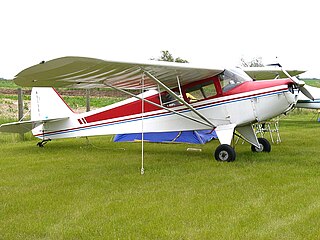
The Taylorcraft B is an American light, single-engine, high-wing general aviation monoplane that was built by the Taylorcraft Aviation Corporation of Alliance, Ohio.
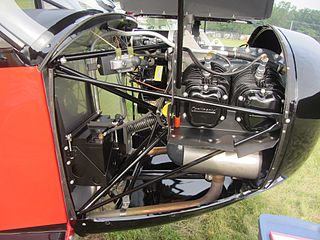
The Continental O-190 is a series of engines made by Continental Motors beginning in the 1940s. Of flat-four configuration, the engines produced 75 hp (56 kW) or 85 hp (63 kW) respectively.

The Aeronca Model 50 Chief was an American light plane of the late 1930s. Consumer demand for more comfort, longer range and better instrumentation resulted in its development in 1938, powered by a 50-horsepower (37-kilowatt) Continental, Franklin or Lycoming engine. A 65-horsepower (48-kilowatt) Continental engine powered the Model 65 Super Chief, which was also built in a flight trainer version, the Model TC-65 Defender, with its rear seat positioned nine inches higher than the front for better visibility.

The Auster J/2 Arrow is a 1940s British single-engined two-seat high-wing touring monoplane built by Auster Aircraft Limited at Rearsby, Leicestershire, England.

The Franklin O-150 was an American air-cooled aircraft engine of the late 1930s. The engine was of four-cylinder, horizontally-opposed layout and displaced 150 cu in (2 L). The power output was nominally 40 hp (30 kW).
The Franklin O-175 was an American air-cooled aircraft engine of the 1940s. The engine was of horizontally-opposed four-cylinder and displaced 175 cu in (2.9 L). The power output was nominally 80 hp (60 kW). A later variant was designated O-180, despite sharing the same displacement.

The Lycoming O-290 is a dual ignition, four-cylinder, air-cooled, horizontally opposed aircraft engine. It was first run in 1939, and entered production three years later.
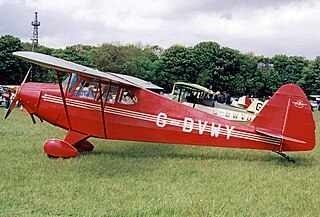
The Porterfield Collegiate is an American-built two-seat training and touring monoplane built by the Porterfield Aircraft Corporation of Kansas City.
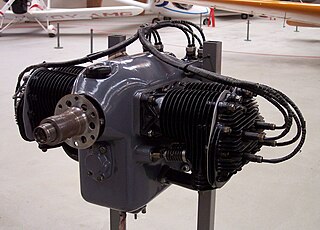
The Continental A40 engine is a carbureted four-cylinder, horizontally opposed, air-cooled aircraft engine that was developed especially for use in light aircraft by Continental Motors. It was produced between 1931 and 1941.

The Continental O-240 engine is a four-cylinder, horizontally opposed, air-cooled aircraft engine that was developed in the late 1960s for use in light aircraft by Continental Motors, Inc. The first O-240 was certified on 7 July 1971.

The HKS 700E is a twin-cylinder, horizontally opposed, four stroke, carburetted aircraft engine, designed for use on ultralight aircraft, powered parachutes and ultralight trikes. The engine is manufactured by HKS, a Japanese company noted for its automotive racing engines.

The Taylorcraft Model D is a light aircraft of the US manufacturer Taylorcraft Aviation from the early 1940s.
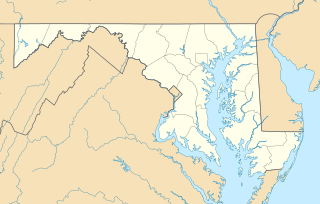
Massey Aerodrome is an airport located 2 miles (3 km) east of Massey, Maryland, United States.
Massey Air Museum at Massey Aerodrome is an aviation museum near Massey, Maryland, United States.
The MWfly B25 is a family of Italian aircraft engines, designed and produced by MWfly of Passirana di Rho for use in light aircraft.


















